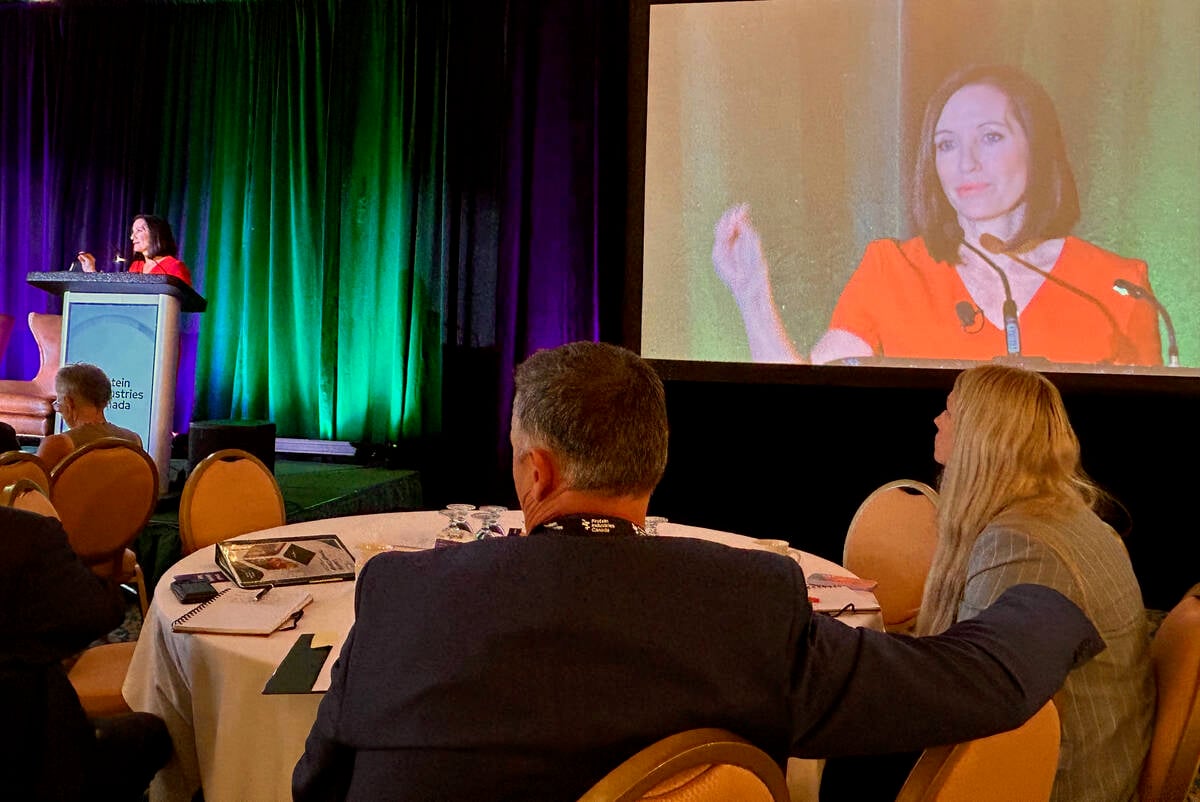SASKATOON — Saskatchewan cattle producers have thrown their financial support behind the National Beef Strategy.
Producers attending last week’s Saskatchewan Cattlemen’s Association annual meeting voted unanimously to increase their national checkoff contribution from $1 to $2.50 per head to pay for the strategy.
Alberta did the same in December, and Manitoba will consider the option at its annual meeting in February. Ontario and British Columbia have meetings later in spring.
“It’s a small price to pay,” Lipton, Sask., producer William Tyson said while seconding the resolution.
Read Also

Canada told trade crisis solutions in its hands
Canadians and Canadian exporters need to accept that the old rules of trade are over, and open access to the U.S. market may also be over, says the chief financial correspondent for CTV News.
Producers attending the Sask-atchewan Beef Industry Conference had earlier heard from the five organizations that are developing the strategy, and they also discussed it at fall district meetings before the annual meeting.
The Beef Cattle Research Council (BCRC), the Canadian Beef Breeds Council, Canada Beef Inc., the National Cattle Feeders’ Association and the Canadian Cattlemen’s Association and its provincial members developed the plan to position Canadian beef as the go-to choice for the future. It is based on beef demand, competitiveness, productivity and connectivity.
However, it comes at a cost.
Raising the checkoff to $2.50 would generate $16 to $17 million to be dispersed as follows:
- Canada Beef, $9.5 million
- BCRC, $3.3 million
- issues management, $1 million
- administration, $525,000
- provincial investments in research and marketing, $2 million
The $1 checkoff now raises $7 million a year to fund Canada Beef and the BCRC. Both use the money to leverage more funding, and both need more in the future.
Declining cattle numbers have reduced check-off revenue.
As well, the $80 million Legacy Fund, which the federal and Alberta governments established after BSE, has expired.
BCRC executive director Andrea Brocklebank said even maintaining current work will be impossible without more money. BCRC leverages money from the federal government’s science cluster in Growing Forward 2 until it expires in 2018.
“The big thing here is under Growing Forward 3 … with current marketings the way they are and declining reserves for the marketing and research organizations, we will not be able to maintain our current research programming at current levels unless we increase allocations to national checkoff,” she told the meeting.
BCRC chair Tim Oleksyn, who farms near Shellbrook, Sask., said governments won’t come to the table with more money if producers aren’t there.
Brocklebank said investment is also needed to train the next generation of researchers.
“We’re in a very critical period,” she said.
“In the next five years within Ag Canada, about 30 to 40 percent of researchers are set to retire.”
Each provincial organization determines what portion of its national checkoff goes toward research. Saskatchewan contributes the most at 30 percent of every dollar. The national average is 16 percent.
The SCA board tabled a resolution to increase the Saskatchewan contribution to 40 percent for later discussion.
Canada Beef chair Jack Hextall said the allocations developed in the strategy were based on the existing percentages.















